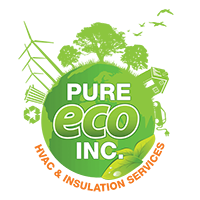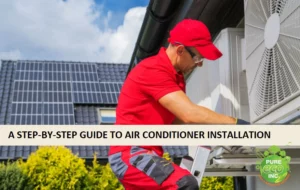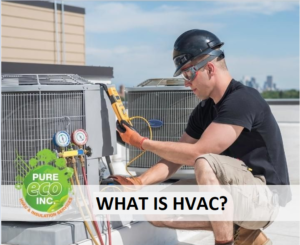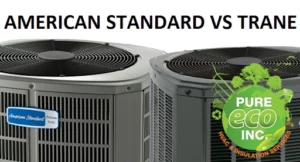Why is vapor barrier installation important?
When it comes to protecting your home from moisture damage, mold growth, and energy loss, vapor barriers play a crucial role. Acting as a protective shield, these barriers effectively prevent the infiltration of moisture and its negative effects on your property.
This article provides you with a clear understanding of what vapor barriers are, how they work, and the numerous benefits they offer to improve your living space.
How Vapor Barriers Work
Vapor barriers are specialized materials that serve a vital role in controlling the flow of moisture vapor. They are strategically placed in various areas of a building, such as walls, floors, attics, and ceilings, with the primary objective of impeding the movement of water vapor from one side to the other.
To gain a better understanding of vapor barriers, let’s delve into the fascinating science of moisture diffusion. Moisture naturally travels from regions with high humidity to those with lower humidity, and this flow can happen in either direction. Within a building, moisture typically migrates from the warm and humid interior to the cooler and drier exterior in colder months. Conversely, during warmer months, it moves in the opposite direction.
Vapor barriers play a crucial role in protecting your home by creating a strong barrier that effectively resists the passage of moisture-laden air. Their primary function is to limit the movement of water vapor, which helps prevent excessive moisture from infiltrating the building envelope. This important protective measure shields your home from potential damage caused by moisture, including issues like rotting wood, structural deterioration, and the growth of mold and mildew.
Preparation for Vapor Barrier installation
In order to achieve effective and long-lasting protection against moisture, carry out proper pre-installation preparation before you install vapor barriers. We will guide you through the essential steps involved in pre-installation preparation, which encompass assessing moisture sources, inspecting existing conditions, and familiarizing yourself with building codes and regulations.
1. Assessing Moisture Sources
To begin the pre-installation process, identify first any potential moisture sources within the structure. Moisture infiltration can occur through various pathways, and understanding these sources will help determine the most effective placement of vapor barriers. Common areas of concern include basements, crawl spaces, attics, and areas prone to water leaks or condensation.
By identifying and addressing these moisture sources, you can prevent further moisture-related issues and ensure that your vapor barrier installation will be effective in controlling moisture movement.
2. Inspecting Existing Conditions
Before installing vapor barriers, evaluate the existing condition of the building envelope, including walls, floors, ceilings, and drainage. Conduct a thorough inspection to identify any signs of existing moisture damage or issues that could compromise the effectiveness of the vapor barriers.
Address any pre-existing moisture issues or damage before proceeding with the installation. Repairing leaks, fixing damaged insulation, and addressing mold or mildew growth will help create a solid foundation for the vapor barrier installation and ensure optimal performance. The floor and wall surfaces should be clean and dry before installing a vapor barrier.
3. Understanding Building Codes and Regulations
Familiarize yourself with local building codes and regulations related to vapor barrier installation to ensure compliance, safety, and adherence to standards. Building codes may specify requirements regarding the types of vapor barriers to be used, installation methods, and other related considerations.
By understanding and following these regulations, you can ensure that your vapor barrier installation meets the required standards. This will both provide maximum protection against moisture and let you comply with legal requirements.
Proper pre-installation preparation is a crucial step in ensuring the effectiveness of vapor barrier installation. By assessing moisture sources, inspecting existing conditions, and understanding building codes and regulations, you lay the foundation for a successful vapor barrier installation that will safeguard your home from moisture-related issues.
While it may seem easier to simply jump in and start installing your vapor barrier, taking the time to identify and address moisture sources, evaluate existing conditions, and comply with building codes, lets you create a robust and durable moisture control system. This will result in long-term benefits for your home, including improved indoor air quality, enhanced energy efficiency, and increased structural integrity.
How to Choose the Right Vapor Barrier
To ensure effective moisture control in your building, choose the appropriate vapor barrier. We have outlined factors that you should consider when selecting a vapor barrier, including climate measurement, humidity control strategy, and compatibility with building materials.
Climate Considerations
The climate in your region plays a significant role in determining the most suitable vapor barrier for your project. Different climates have varying levels of humidity and temperature fluctuations, which can impact moisture movement within the building envelope.
In humid climates, where moisture infiltration is a common issue, you may prefer to install a vapor barrier with a higher permeability rating. This allows some moisture to escape, thus preventing condensation and potential damage. On the other hand, in colder climates where temperature differentials between the interior and exterior are more significant, a vapor barrier with a lower permeability rating may be better as this helps prevent moisture from entering the building.
Understanding the specific characteristics of your climate will guide you in choosing the appropriate vapor barrier material and determining its permeability rating to effectively control moisture.
Moisture Control Strategy
The choice of vapor barrier type and installation method will also be influenced by the moisture control goals for your building. Consider whether your primary objective is to prevent moisture intrusion from the outside or to control moisture generated from indoor activities.
For buildings in areas prone to heavy rain or high groundwater levels, it may be necessary to install a plastic vapor barrier with excellent water resistance and a robust installation method, such as a fully adhered system.
In spaces where moisture generation from within the building is a concern, such as bathrooms or kitchens in high-humidity areas, a vapor barrier with good vapor diffusion properties can help effectively regulate moisture levels.
A crawl space vapor barrier can prevent soil/ground moisture and crawl space moisture problems like mold. Crawl space encapsulation cuts heating and cooling costs and keeps pests away.
By understanding your moisture control strategy, you can select a vapor barrier that aligns with your specific needs and ensures effective moisture management.
Compatibility with Building Materials
When you are selecting a vapor barrier, always take into account its compatibility with other building materials. Various vapor barrier materials may interact with insulation, framing, and finishes in different ways, potentially affecting the overall performance and lifespan of the vapor barrier system.
To ensure smooth integration with your existing or planned building materials, select a compatible vapor barrier. Consider important factors like adhesion, fastening methods, and potential chemical reactions. For instance, if you’re using spray foam insulation, choose a vapor barrier specifically designed for use with spray foam to prevent any compatibility issues.
By considering these factors, you can confidently make an informed decision and select a vapor barrier that will effectively safeguard your building against problems caused by moisture.

Types of Vapor Barriers
Vapor barriers play a crucial role in maintaining a healthy moisture balance within your home. These barriers, which can be made of materials like polyethylene, foil, or spray foam, are strategically placed within the building. Their purpose is to prevent the movement of moisture by acting as a barrier, limiting the transfer of water vapor between different areas. By impeding the diffusion of moisture, vapor barriers effectively protect your home from the potential damage caused by excessive humidity and condensation.
To make an informed decision for your project, you must first understand the various types of vapor barriers along with their respective advantages and disadvantages. Let’s explore the different options available:
Polyethylene Vapor Barriers
Polyethylene vapor barriers are among the most common and widely used types of vapor barrier materials. They consist of durable plastic sheeting, typically made of high-density polyethylene (HDPE) or low-density polyethylene (LDPE).
Polyethylene vapor barriers are known for their excellent moisture resistance. They come in different thicknesses, ranging from 4 mils to 15 mils, providing varying levels of protection against moisture diffusion. This flexibility allows them to be used in various areas of a building, including walls, floors, and ceilings.
Foil Vapor Barriers
Foil vapor barriers, also known as reflective insulation, are another type of vapor barrier that offers unique properties. These barriers are made of a reflective aluminum foil layer laminated to other materials, such as polyethylene or kraft paper.
Foil vapor barriers are known for their exceptional reflective properties. These barriers are specifically designed to reflect radiant heat and prevent the transfer of moisture-laden air.
They find widespread usage in applications where controlling heat gain or loss is important, such as in attics or in regions characterized by hot summers and cold winters.
Spray Foam Vapor Barriers
Spray foam is a versatile insulation material that can also serve as a vapor barrier. It is applied as a liquid, expanding and solidifying into a foam that provides both insulation and moisture control.
Pros and Cons of Each Type
Each type of vapor barrier has its own advantages and disadvantages:
Type | Advantages: | Disadvantages: |
Polyethylene Vapor Barriers | Cost-effective: Polyethylene vapor barriers are relatively affordable compared to other types of barriers, making them a popular choice for both residential and commercial applications. Easy installation: They are typically available in rolls, making them easy to handle and install. They can be secured with adhesive or mechanical fasteners. Versatility: Polyethylene vapor barriers can be used in different climatic conditions and are suitable for both warm and cold climates. | Vulnerable to punctures: Polyethylene barriers can be punctured during installation or construction activities, compromising their effectiveness. Extra care must be taken to avoid accidental damage. Limited durability: Over time, polyethylene vapor barriers may degrade or become brittle, particularly if exposed to direct sunlight or extreme temperature fluctuations. |
Foil Vapor Barriers | Excellent thermal performance: Foil barriers reflect radiant heat, helping to maintain a more comfortable indoor temperature and reducing energy consumption. Improved insulation: When combined with other insulation materials, foil barriers can enhance the overall insulation performance of a building envelope. Resistance to mold and mildew: Foil barriers don’t provide a suitable environment for mold growth, contributing to healthier indoor air quality. | Limited moisture resistance: Foil barriers are more effective at blocking radiant heat than controlling moisture diffusion. They may not be as effective in areas with high humidity or moisture infiltration. Vulnerability to damage: Foil barriers can be easily torn or punctured during installation or maintenance activities, requiring careful handling and protection. |
Spray Foam Vapor Barriers | Spray foam acts as an insulation and air-sealing material, effectively reducing heat transfer and preventing moisture intrusion. When applied correctly, it can create a continuous and seamless vapor barrier, eliminating gaps and minimizing the risk of moisture-related issues | Professional installation: Spray foam vapor barriers are typically installed by trained professionals due to the specialized equipment and expertise required for the job. Compatibility with other materials: It is essential to ensure compatibility between spray foam and other building materials. |
By selecting a vapor barrier that works well with your building materials, you can ensure seamless integration of the system and optimize its moisture control effectiveness.
Vapor Barrier Installation Process
Proper installation is essential for vapor barriers to be effective in controlling moisture. We will outline the step-by-step process for vapor barrier installation, covering surface preparation, vapor barrier placement, and the necessary tools and equipment.
1. Surface Preparation
Before installing the vapor barrier, prepare the surfaces properly to ensure optimal adhesion and performance.
Start by thoroughly cleaning it where the vapor barrier will be installed. Remove any dirt, dust, debris, or loose materials that could interfere with proper adhesion.
Next, inspect the surfaces for any damage, such as cracks or holes. Repair these areas using suitable materials and techniques to create a smooth and solid surface for the vapor barrier installation.
2. Vapor Barrier Placement
Once the surfaces are prepared, proceed with the actual installation of the vapor barrier. The specific steps may vary depending on the type of vapor barrier chosen, but the following guidelines generally apply.
First, measure and cut the vapor barrier material according to the dimensions of the area to be covered, leaving an adequate overlap for seams and edges.
Start the installation by positioning the vapor barrier at the lowest point of the installation area and work your way up. Smoothly unroll or unfold the material, ensuring it covers the designated area entirely.
Use appropriate sealing methods, such as butyl tape or adhesive, to securely seal any seams or overlaps in the vapor barrier. This creates a continuous barrier that prevents moisture from infiltrating through gaps.
Pay special attention to areas with penetrations, such as pipes, vents, or electrical outlets. Use compatible sealants or gaskets to ensure a tight seal around these penetrations, effectively blocking moisture entry points.
Tools and Equipment Required
To successfully install vapor barriers, you will need the following tools and equipment:
- Utility knife or scissors: Used for cutting the vapor barrier material to the desired size.
- Tape or adhesive: Necessary for sealing seams and overlaps, thus ensuring a watertight barrier.
- Staple guns or fasteners: Used to secure the vapor barrier material to the surfaces, thus providing proper attachment and stability.
- Sealants or gaskets: Required to seal penetrations and ensure a tight seal around pipes, vents, or other openings.
Common Mistakes to Avoid
A common mistake is not covering the entire area that requires protection. Leaving gaps or exposed surfaces can allow moisture to bypass the vapor barrier, which may lead to moisture damage. Ensure that the vapor barrier is installed thoroughly and covers all relevant surfaces.
Improper overlapping of vapor barrier sections can compromise the continuity of the barrier as well. Follow the manufacturer’s instructions for overlapping guidelines to ensure a proper seal and prevent moisture infiltration.
Also, placing the vapor barrier on the wrong side of the insulation can disrupt the moisture control mechanism. Ensure that the vapor barrier is placed on the warm side of the insulation to prevent condensation and moisture accumulation.
Once you are finished, you must inspect the barrier regularly to identify any signs of damage or deterioration in the vapor barrier. Check for any punctures, tears, or areas where the barrier may have become detached. If any damage or deterioration is detected, promptly repair or replace the affected areas. Neglecting repairs can compromise the effectiveness of the vapor barrier and lead to moisture-related problems.
During your inspections, you may notice that debris such as dust, dirt, or insulation fibers has accumulated over time on the surface of the vapor barrier, reducing its performance. Regularly clean the vapor barrier to remove any debris and maintain its functionality.
Any changes in the building’s structure, such as renovations or modifications, may require adjustments or additions to the vapor barrier. Stay attentive to these changes and consult with professionals to ensure the vapor barrier remains properly installed and effective.
By avoiding these mistakes and prioritizing maintenance, you can protect your building from potential moisture-related problems and maintain a healthy indoor environment.
Contact Pure Eco Inc
Seeking professional assistance will help you achieve a successful vapor barrier installation, protect your building from moisture-related issues, and create a comfortable and healthy environment for occupants.
Contact us today for additional information on space vapor barriers and to learn more about all of our premier services!





